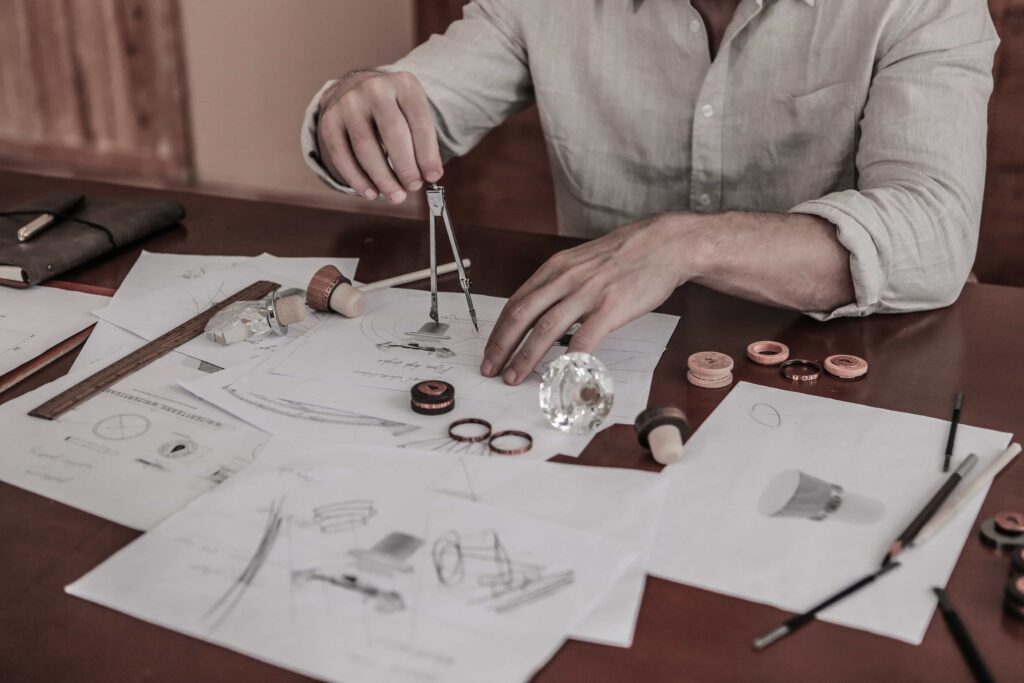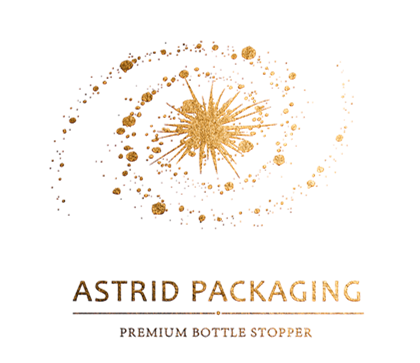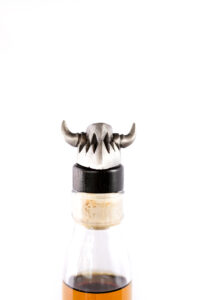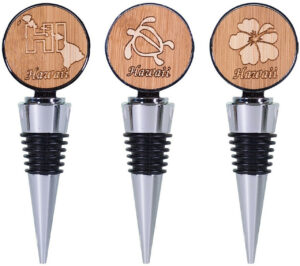Have you ever wondered about the differences between a wood bottle stopper and a cork stopper? Both are commonly used to seal wine, oil, vinegar, and other bottles, but they have distinct characteristics that set them apart. In this post, we’ll explore the differences between wood and cork stoppers in terms of material, functionality, design, cost, sustainability, and personal preference. Whether you’re a wine enthusiast, a collector of bottle stoppers, or simply curious about the topic, this post will provide you with a comprehensive overview of the two types of stoppers and help you decide which one is right for your needs. So let’s dive in and discover the fascinating world of bottle stoppers!
How wood and cork bottle stoppers work?
Both wood and cork stoppers are designed to keep the contents of a bottle fresh and prevent spills. Here’s a closer look at how each type of stopper works:
Wood bottle stoppers are typically designed with a tapered shape that allows them to be inserted into the bottle opening snugly. The pressure from the tapered shape creates a tight seal, which helps prevent air from getting into the bottle and spoiling the contents. Some wood bottle stoppers may have a silicone or rubber seal around the base to create an even tighter seal. Wood bottle stoppers are easy to insert and remove, making them a convenient option for regular use.
Cork bottle stoppers work differently from wooden stoppers. The spongy texture of the cork allows it to compress when inserted into the bottle, creating a tight seal. The compression of the cork also creates a slight vacuum effect, which helps keep the contents fresh by preventing air from entering the bottle. They can be a bit more difficult to insert and remove than wooden stoppers because of their elasticity. However, this tight fit is what makes them highly effective at keeping the contents fresh. It’s important to note that cork stoppers should be stored horizontally to prevent the cork from drying out, which could cause the seal to weaken over time.
Overall, both wood and cork bottle stoppers can effectively seal a bottle and keep the contents fresh. However, cork bottle stoppers are typically preferred for wine bottles because of their superior sealing properties, while wood bottle stoppers are popular for use with oil, vinegar, and other non-alcoholic liquids.
The difference in materials between wood and cork bottle stoppers


Wood and cork are two vastly different materials that are commonly used to create bottle stoppers. Wood is a natural material that comes from trees, while cork is a harvested material from the bark of a specific type of oak tree.
Wood bottle stoppers can be made from a variety of different types of wood, each with its unique properties. Some popular types of wood used for stoppers include maple, cherry, and walnut. Wood bottle stoppers tend to have a smooth and polished surface and are known for their natural beauty and unique grain patterns. They are also relatively dense and durable, making them less prone to damage or breakage.
In contrast, cork bottle stoppers are made entirely from cork material, which is lightweight and has a spongy texture. Cork is known for its excellent sealing properties, making it a popular choice for wine bottles. It is also highly durable and can be reused multiple times, which makes it an environmentally-friendly option. Cork stoppers are available in different sizes and shapes, allowing them to fit a wide range of bottle types.
Overall, while both materials serve the same purpose of keeping the contents of a bottle fresh, they each have unique properties that set them apart. Wood bottle stoppers are sturdy and aesthetically pleasing, while cork bottle stoppers are lightweight and highly effective at sealing.
The aesthetic differences between wood and cork bottle stoppers

One of the most significant differences between wood and cork stoppers is their aesthetic appeal. Here’s a closer look at how the two materials differ in terms of colors, patterns, textures, shapes, and sizes:
Wood bottle stoppers:
Wood bottle stoppers come in a variety of colors, patterns, and textures, depending on the type of wood used. For instance, maple stoppers have a light color and smooth texture, while walnut stoppers have a darker color and distinctive grain patterns. Some wood bottle stoppers are also stained or painted to create unique designs or add a pop of color.
In terms of shapes and sizes, wood bottle stoppers can be found in a range of styles, from classic tapered designs to more decorative shapes like spheres or animal figures. They are also available in various sizes to fit different types of bottles, including wine bottles, oil and vinegar bottles, and liquor bottles.
Cork bottle stoppers:
Cork bottle stoppers are typically a light tan or brown color, with a smooth or slightly textured surface. However, some cork stoppers are dyed to create a more colorful or eye-catching appearance. The natural texture of the cork can also create interesting patterns and visual appeal.
Cork bottle stoppers come in a range of shapes and sizes to fit different types of bottles. Standard cork stoppers are tapered and fit snugly into wine bottles, while other shapes, like cork balls or disks, may be better suited for other types of bottles.
Overall, both wood and cork bottle stoppers offer unique aesthetic appeal, with different colors, patterns, textures, shapes, and sizes to choose from. When selecting a stopper, consider the overall look and feel of the bottle you’ll be using it with, and choose a stopper that complements the style of the bottle.
The cost differences between wood and cork bottle stoppers

The cost of wood and cork stoppers can vary depending on a variety of factors, including the quality of the material and the design of the stopper. Here’s a closer look at how the two types of stoppers compare in terms of cost:
Wood bottle stoppers are typically more expensive than cork stoppers, primarily because of the cost of the raw materials. Different types of wood can vary in price, with more exotic woods commanding a higher price tag. Additionally, the cost of producing wooden stoppers may be higher than cork stoppers, as they often require more intricate designs and finishing processes. The cost of wood bottle stoppers can also vary depending on the design and size of the stopper. More complex designs or larger sizes may be more expensive than simple, small stoppers.
Cork stoppers are generally less expensive than wooden stoppers, primarily because of the lower cost of the raw materials. Cork is a renewable and sustainable material, which makes it more affordable than some types of wood. However, like wood bottle stoppers, the cost of cork stoppers can vary depending on the quality and design of the stopper. Higher-quality cork stoppers may cost more, particularly if they have a more complex design or are made to fit a specific type of bottle.
Overall, while wood bottle stoppers are generally more expensive than cork stoppers, the cost can vary significantly depending on a range of factors. When shopping for stoppers, it’s important to consider both the cost and the quality of the materials and design, to ensure that you’re getting a product that meets your needs and fits your budget.
In conclusion, both wood and cork stoppers offer unique benefits and drawbacks, and the choice ultimately depends on personal preference, the type of liquid being stored, and the desired aesthetic. Wooden stoppers are durable, aesthetically pleasing, and easy to use, while cork stoppers are lightweight, highly effective at sealing, and eco-friendly. When selecting a stopper, it’s important to consider the material, design, size, and cost, to ensure that you’re getting a product that meets your needs and fits your budget. With the information provided in this article, you should now be equipped to make an informed decision and choose the perfect stopper for your needs.





